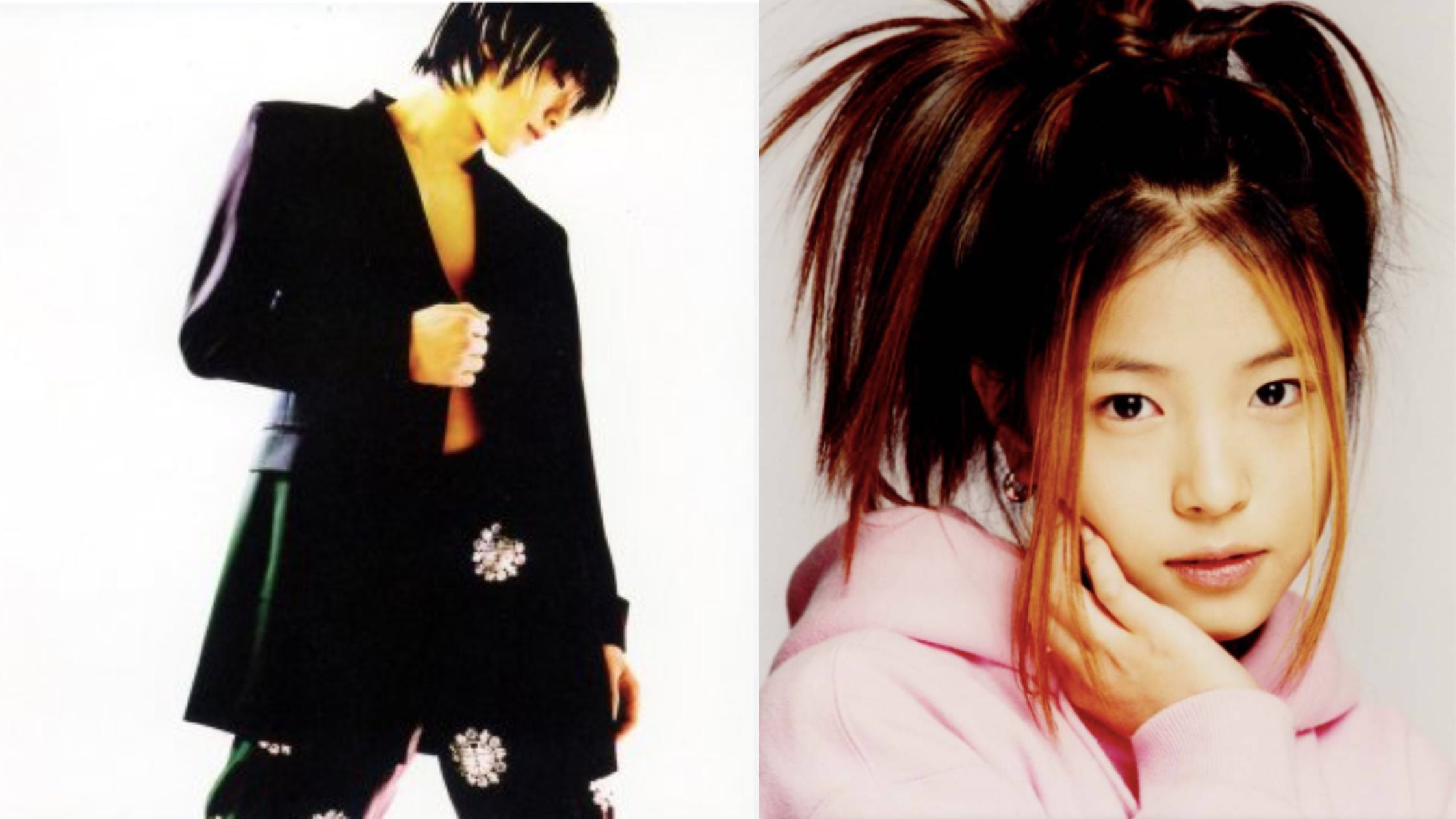How do you define K-pop? By a particular group or style? What comes to mind when you think of popular Korean music? For new stans, navigating this world can feel like riding a roller coaster if you don't know where to start. But that's where we come in. Welcome to K-pop 101, where we’ll dive deeper into the Korean Music Phenomenon!
We recognize that there are many K-pop groups. If your favorite idols aren't here, it's because we needed to limit this blog to a few key artists. There’s also some debate over the exact start and end dates of the generations. (Seven years, five years, etc.) We've chosen the most widely accepted timeframes for this blog.
First Generation (1992/1996-2002)
Newer fans might not be familiar with the first generation of K-pop, but today’s music owes a lot to these pioneers. Before the 1990's, most Korean music targeted older adult audiences, with trot dominating the scene. But then, Seo Taiji and Boys appeared in 1992, bringing everything to a halt.
With the fashion and moves of American boy bands and music that appealed to the younger demographic, they changed K-pop forever. Each of their albums incorporated different genres, including new jack swing, hip-hop, and alternative rock. They also brought rapping into mainstream Korean music. Although they disbanded after four years, Seo Taiji and Boys' impact continues to be felt today.

Image Credits: Image via South China Morning Post
In 1996, SM Entertainment debuted its first boy band: H.O.T. (below). Other groups soon followed, including Sechskies, Shinhwa, YG Entertainment’s 1TYM (created by Seo Taiji and Boys member Yang Hyun-suk), and g.o.d.
While some groups found more overseas success than others, they all laid the foundation for today’s boy bands. This influence extended to catchy choreography, memorable lyrics, and (unfortunately in the case of H.O.T. and Sechskies, below) some nasty fanwars. Combined with Korean films and shows, they started the first Korean Wave.
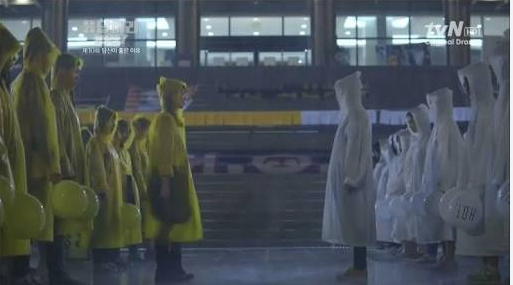
Photo credits: aghin via Twitter
We can’t leave out the ladies. The biggest 1st Gen girl group was SM Entertainment’s S.E.S. which debuted in 1997. With genres consisting of R&B, jazz, and bubblegum pop and concepts ranging from innocent to dark, S.E.S. was an inspiration to contemporary groups (including Baby Vox and Fin.K.L.) and is still fondly remembered today.
Finally, 1st Gen K-pop gave the world some groundbreaking soloists. Singer-actor Rain astounded audiences with his smooth vocals and sensual moves. Meanwhile, SM Entertainment’s BoA kicked off a legendary career at only 13 years old, showcasing killer dance skills and an impressive vocal range that later earned her the nickname “Queen of K-pop.”
L-R: Image via Musixmatch / Image via 보아(BoA) on Facebook
And we can’t forget about singer-actress Uhm Jung-hwa. From emotional ballads to seductive tracks, she continues to inspire new generations of performers thanks to her versatility and passion for music.
The styles and sounds of 1st Gen K-pop may seem outdated to modern listeners, but without them many of our favorite artists wouldn’t be here today. If most of the artists below are unfamiliar to you, then pick one or two of them to check out their discography. You may find some bops there.
Representative Acts: Seo Taiji and Boys, S.E.S., H.O.T., Baby Vox, Sechskies, Fin.K.L., Rain, BoA, Shinhwa, Uhm Jung Hwa, g.o.d.
Second Generation (2003-2010/2011)
Fondly referred to as the “Golden Age,” K-pop's 2nd Generation sparked the New Korean Wave with groups and songs that you still hear on music shows and fans’ playlists. The K-pop training system as we know it also underwent further development and is still in use today.
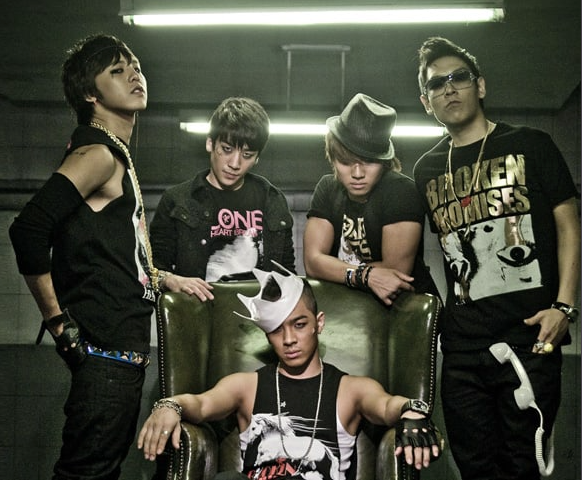
Image Credits: Image via BIGBANGmusic
With several notable exceptions, most of the hit groups came from the Big Three: SM Entertainment, JYP Entertainment, and YG Entertainment. YG produced Big Bang and 2NE1. Both groups were heavily influenced by hip-hop and soon became some of the biggest names in K-pop.
Big Bang is known for many firsts, including being the first boy band to be actively involved in writing their own music and the first to win an international award (Best Worldwide Act at the 2011 MTV EMAs). With BTS citing them as one of their influences, Big Bang deserve their title as the "Kings of K-pop."

Image Credits: Image via Kami.com.ph
Meanwhile, 2NE1 is one of, possibly the most experimental and charismatic 2nd Gen girl groups. Along with rap and R&B, they featured lots of reggae styles in their tracks. They also popularized the "girl crush" concept and set many fashion and hair trends with their costumes. 2NE1 was one of the first "it girls" in K-pop and they're still missed today.
However, SM gave YG a run for their money. The company gave netizens three boy bands and two girl groups. TVXQ, Super Junior, and Shinee hooked fans with their earworms “Mirotic,” “Sorry Sorry,” and “Ring Ding Dong.”
Meanwhile, Girls' Generation charmed listeners with many hits, including “Gee” (below) and “Oh!” While they tried out various genres in the 3rd Gen, they stayed true to their pop roots. Their sister group f(x) brought more of an EDM and electropop sound with tracks like “LA chA TA” and “NU ABO.”
JYP had two girl groups and two boy bands (originally one group called One Day). Wonder Girls was the first K-pop group to debut on the Billboard Hot 100 with “Nobody” in 2009 (originally released in 2008). They're called “South Korea’s Retro Queens” because of their dance-pop and retro sound. Miss A broke another record when their debut “Bad Girl, Good Girl” became the first debut to reach number 1 on the Gaon Digital Chart (in 2010). Their biggest hit “Hush” is still being played and covered on music shows.
2AM is mainly a ballad group and had several hit singles including “Can’t Let You Go Even If I Die." However, their label mates 2PM gained superstardom, setting themselves apart with their “beast idol” (macho) image, acrobatic skills, and electronic influences. “Again & Again” won many awards and is one of 2nd Gen K-pop’s most iconic tracks.
Besides these major companies’ groups, there were other big names that emerged. T-ara released songs in various genres and came back with different concepts and high-budget music videos. Their 2009 debut and repackaged albums spawned several successful hits, including “Bo Peep Bo Peep” and “You Drive Me Crazy.” Their 2011 song “Roly Poly” is one of the most-downloaded singles in Korea.
After a shaky start and several concept changes, Kara took the K-pop world by storm with singles like “Mister” (which includes the iconic “butt-dance”) and “Lupin.” Their 2011 single “Step” is considered one of the greatest K-pop songs of the 2010's and of all time.
Speaking of dances, Brown Eyed Girls shocked and fascinated audiences with their concept change for “Abracadabra,” switching to a sexier concept that included the now-classic “Saucy” dance (Sigeonbang chum). Both the group and member Gain would continue to break taboos with their later music.
On the boy band side, Infinite quickly became one of 2nd Gen's most unique groups with exceptional live vocals and excellent choreography. Their 2012 single “The Chaser” is often considered one of the best K-pop and boy band songs.
Initially debuting as Beast, Highlight changed their name after switching labels. They achieved success under both names with hits such as “Bad Girl,” “Shock” (below), and “Beautiful” in their first two years alone.
Then there’s SS501, who didn’t survive the decade (inactive since 2010) but produced some amazing tracks. Apart from their own songs including “Déjà Vu” and “U R Man” (below), they achieved success with OSTs for Boys Over Flowers (2009), including “Because I’m Stupid” sung by member Kim Hyun-joong who starred in the k-drama.
The biggest soloists to emerge from this generation were Se7en, IU, and Hyuna. Se7en’s discography consists of both R'&'B and hip-hop tracks, as you can hear in “Passion," “Crazy” (below), and “I’m Going Crazy.” His successes in Korea and east Asia solidified his status as a “Hallyu” star.
Meanwhile, IU stole the world’s heart with emotional, tender, and powerful songs. Her 2010 song “Good Day” is famous for its incredibly high notes and catchy melody. IU has continued to produce hits while also acting in several big K-dramas and films such as Hotel del Luna (2019) and Broker (2022).
Originally debuting with Wonder Girls, Hyuna left for health reasons and later debuted with 4Minute. The following year (2010), she began a solo career which she described as “performance-oriented." With flirty concepts and provocative videos that earned condemnation from conservative audiences, Hyuna pushed the envelope for female artists then and is still doing it today.
Depending on who you ask, 2nd Gen K-pop ends in 2010 or 2011. Two groups who debuted in 2011 but who had more success in the coming 3rd Generation were Block B, whose concepts and lyrics ruffled some feathers, and Apink, who have consistently kept an innocent image even with their more mature sound in later years.
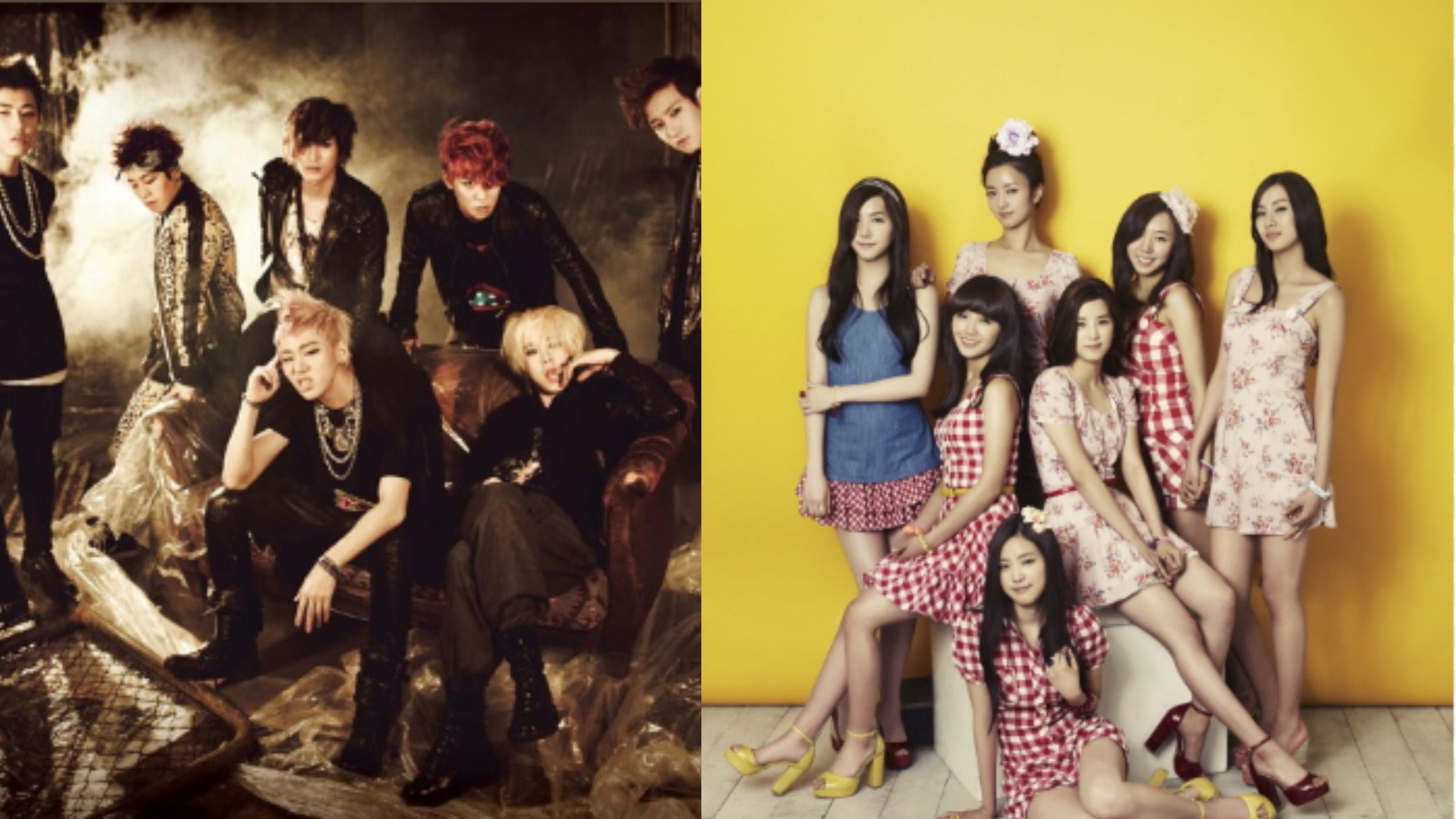
L-R: Image via Soundcloud / Image via The Korea Herald
None of these groups exited the 2000's or 2010's unscathed. Some groups lost members, while others became inactive or disbanded altogether. However, even the lesser-known groups are still remembered today for their contributions to K-pop. The world would be a darker place without their songs.
Representative Acts: Girls’ Generation, Big Bang, 2NE1, Super Junior, T-ara, 2PM, KARA, TVXQ, Sistar, SS501, Miss A, Shinee, Brown Eyed Girls, Infinite, Wonder Girls, Beast/Highlight, IU, Se7en, Hyuna
Third Generation (2011/2012-2017)
In contrast, many 3rd Gen K-pop groups are still around, albeit with some lineup changes. Before we get to them and their impact on the K-pop scene, let’s take a moment to remember Psy’s “Gangnam Style” (2012). It was a viral sensation, becoming the first YouTube video to hit a billion views, and it had everyone trying the iconic horse dance.
The stage was set for two of K-pop's biggest acts and other beloved groups to jump on the Korean Wave. To simplify the list, we’ll divide the boy bands and girl groups into their separate categories.
Boy Bands
To quote member Suga: “Do you know BTS?” BTS debuted in 2013 but they weren’t an immediate success. Their first award-winning single “I Need U” was to be a disbandment song, but thankfully they were able to continue onto greater hits, including “Blood Sweat & Tears,” “DNA,” and “Boy with Luv.”

Image Credits: BTS via Soundcloud
BTS’ influence can’t be overstated. They are the first Korean act to be nominated for a Grammy, one of the best-selling artists of all time, and named the “Princes of Pop” by Time. The group was awarded the South Korean Order of Cultural Merit in 2018 for their efforts in spreading Korean culture worldwide. Despite now being on hiatus to focus on solo projects and complete their military service, BTS continues to be musical icons and cultural ambassadors.
The other enormous boy band of K-pop's 3rd Gen is EXO. Known for their astounding vocals as well as their exceptional choreography and blend of different genres, EXO is a force to be reckoned with. Each comeback contains ballads and pounding tracks that captures the hearts of both EXO-Ls and regular stans.
But if we’re talking about choreography, then we must credit the kings of synchronized dancing: Seventeen! Consisting of three units and thirteen members who actively participate in and produce their own music, this group is talented onstage and chaotic offstage. If you want to go deeper as a new Carat, then check out their show “Going Seventeen” on YouTube.
Then there are the concept kings VIXX. Taking inspiration from classic novels, ancient mythology, and even traditional Korea, VIXX produced many high-quality albums that featured amazing costumes and set designs as well as catchy music and memorable lyrics. Watch the videos for “Hyde,” “Voodoo Doll” (below), and “Scentist” if you want a taste of their artistry.
Warning: This video contains some disturbing imagery.
From the sheer number of its sub-units, NCT (including NTC U, NCT 127, NCT Dream, the Chinese-language WayV, and NCT DoJaeJung) is a real super-group. Incorporating pop, hip-hop, and R&B styles and featuring insane choreography and eye-catching videos, NCTzens – and netizens – have a lot to be proud of.
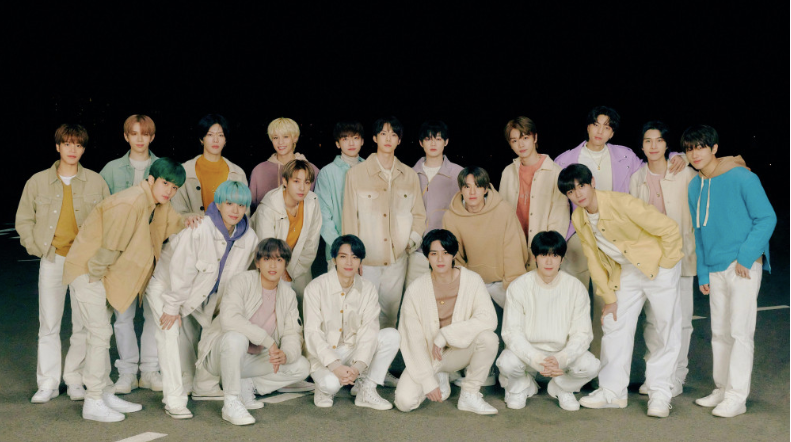
Photo Credits: Image via allkpop
If 2PM were 2nd Gen K-pop’s beast idols, then Monsta X is 3rd Gen’s. With powerful dance moves, vocals, and rapping, this group continues to put out hard-hitting tracks and soft ballads in Korean, Japanese, and English. They're the definition of a triple threat.
Other groups we need to mention are YG’s Winner (top left) and iKON (right), both with hip hop styles and two of K-pop's most aggressive rappers (Winner’s Mino and iKON’s Bobby); and GOT7 (bottom left) formerly of JYP, who dazzled audiences with their smooth sound and moves and feature many talented members with unique solo careers.
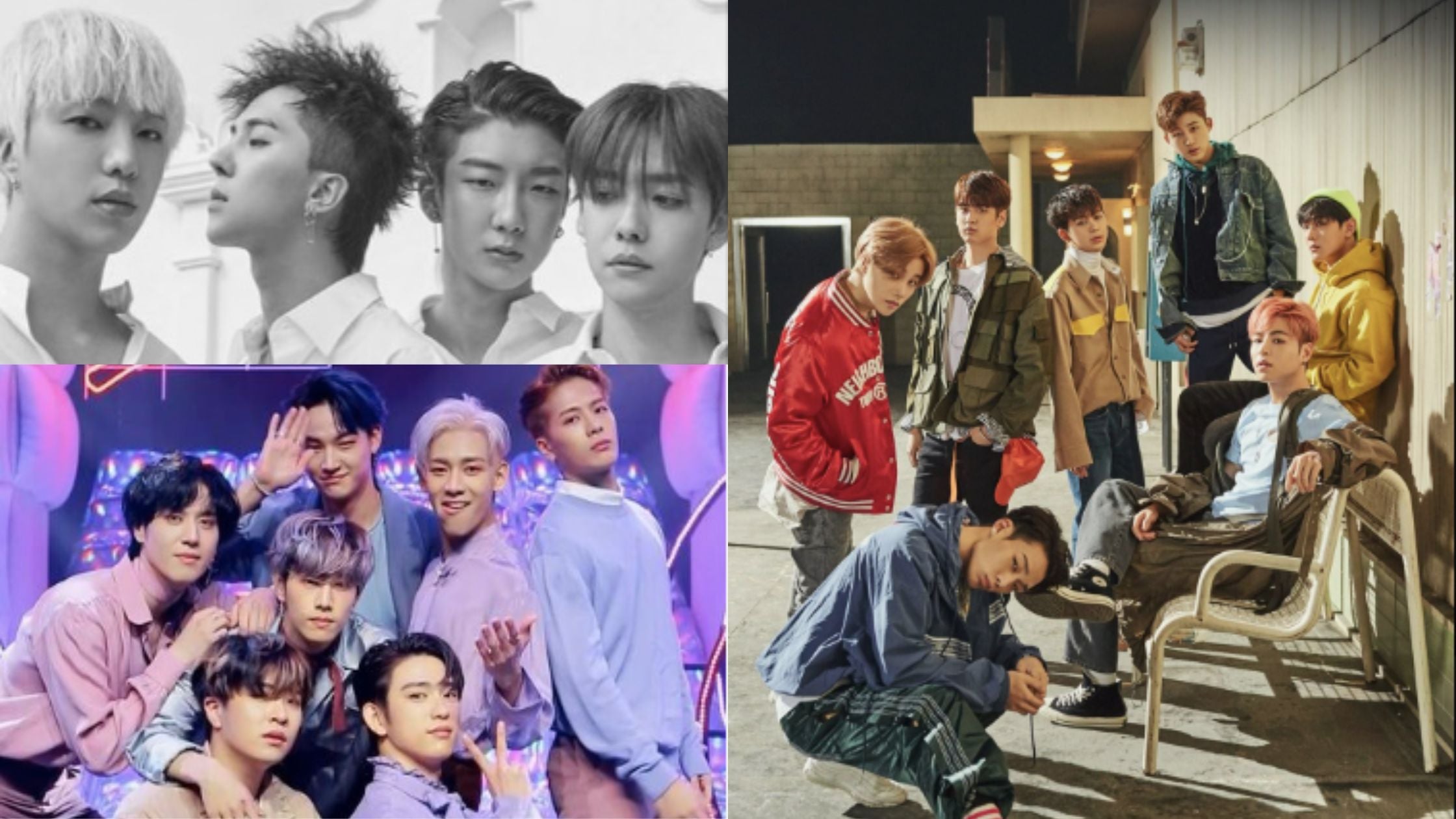
Counter Clockwise: Image via Soundcloud / Image via IMDB / Image via KONY'S DESIGN on Twitter
Girl Groups
Three of the current big girl groups come from the Big Three companies and K-pop's 3rd Gen. Starting the list, we have none other than YG’s Blackpink, who have broken various records with the music videos and albums. Their 2018 hit “Ddu-Du Ddu-Du” was the first K-pop group video to pass 1 and 2 billion views and is still the most-watched K-pop music video after “Gangnam Style."
Their reach extends beyond music. Each of Blackpink’s members is a global fashion ambassador, two of them are or will be actresses (Jisoo in 2021-2022’s Snowdrop and Jennie in 2023’s The Idol), and all of them have their own solo albums. They’re one of the most-awarded, most influential, and most-loved groups in the world. Blackpink in your area!
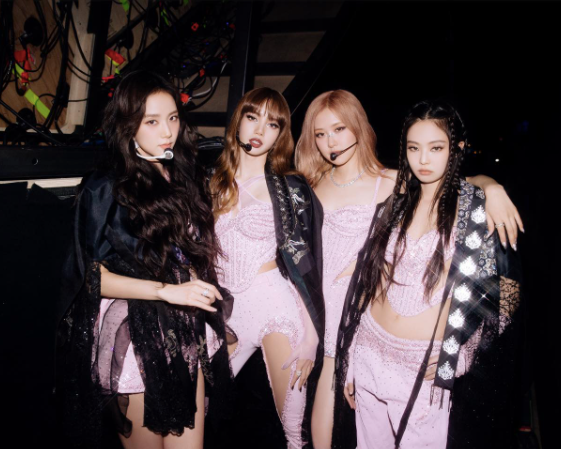
Image Credits: Blackpink via Instagram
From JYP, we have Twice, whose styles range from cute to mature, bubble gum pop to dance-pop. With viral dances and music videos as well as addictive lyrics and melodies, they’ve also released hit songs in Japanese and English. Fun and uplifting, you can always count on Twice to cheer [you] up.
Rounding off the trio is SM’s Red Velvet, who are famous for their amazing vocals and harmonies. Their discography includes ballads like “One of These Nights,” summery tracks like “Red Flavor,” upbeat songs like “RBB (Really Bad Boy),” and R&B hits like “Psycho" (below). You’re bound to find a Red Velvet song for your playlist, no matter what genre you like.
Most 3rd Gen girl groups went with a pop sound. But there were other concepts at play. From the beginning to mid-2010's, there were several artists that debuted with a sexy concept. The most notable examples include AOA (“Miniskirt”) and EXID (“Up and Down”).
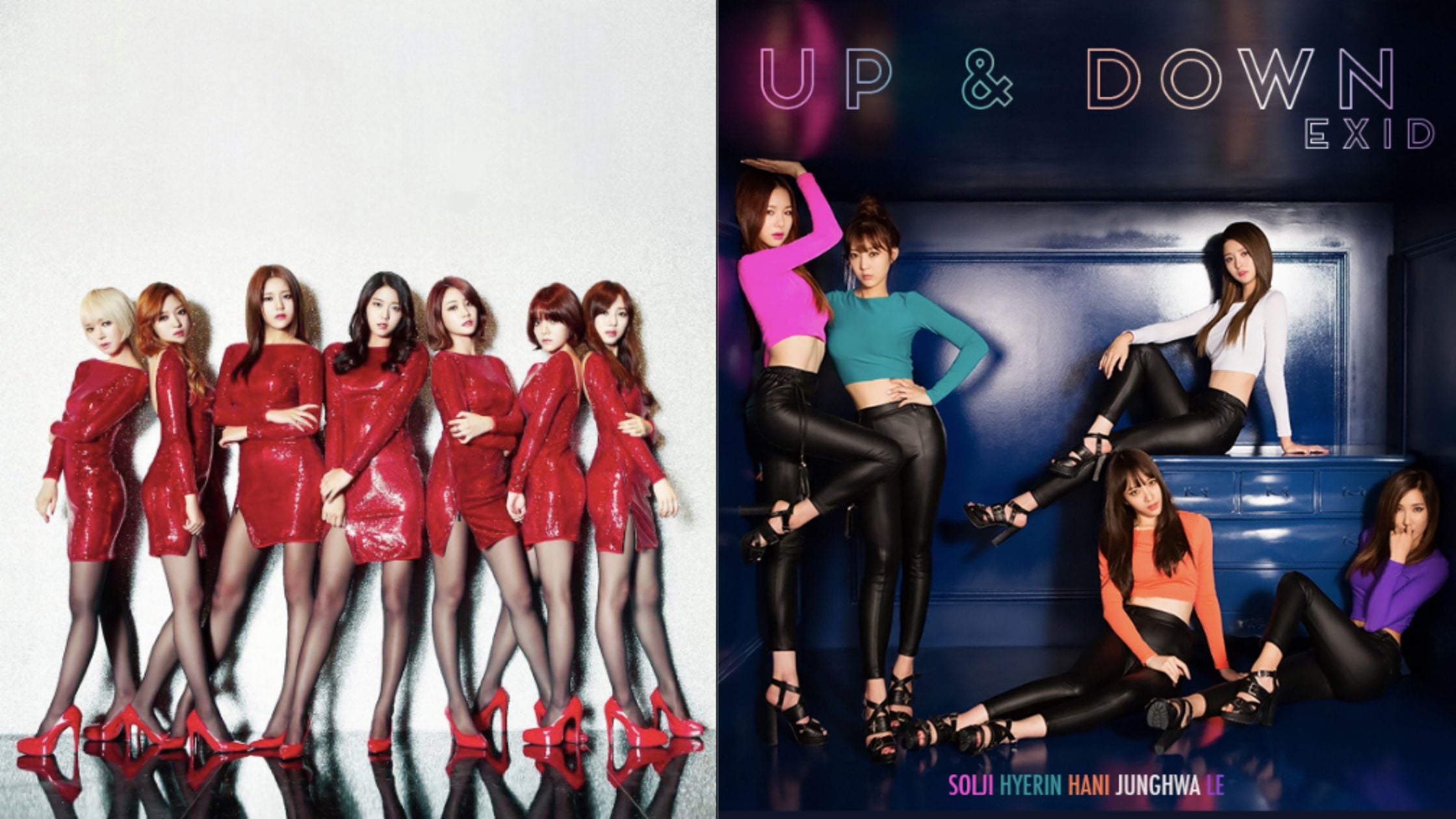
L-R: Coco via Twitter / Image via newstempo
Mamamoo bring class and fun with their music. While each member has their own unique discography, together they produce songs with amazing vocals and a lively stage presence. Incorporating genres like R&B, jazz, hip-hop, and Latin dance, they also deliver messages that challenge society standards, showing them to be true feminists.
Girl groups with a rock/metal sound and horror concept weren’t common before 2017. However, with Dreamcatcher’s debut, a new force was unleashed onto the K-pop scene. They brought literal head-bangers and music videos with fantasy, sci-fi, and Gothic horror elements into the 3rd Generation. While there are more girl groups now with darker concepts and sounds, Dreamcatcher was the first, and it’s still one of the most influential groups today.
Other girl groups we need to mention are GFriend (who debuted with an innocent concept and charmed listeners around the world) and Oh My Girl (who have produced many pop tracks with viral choreography).
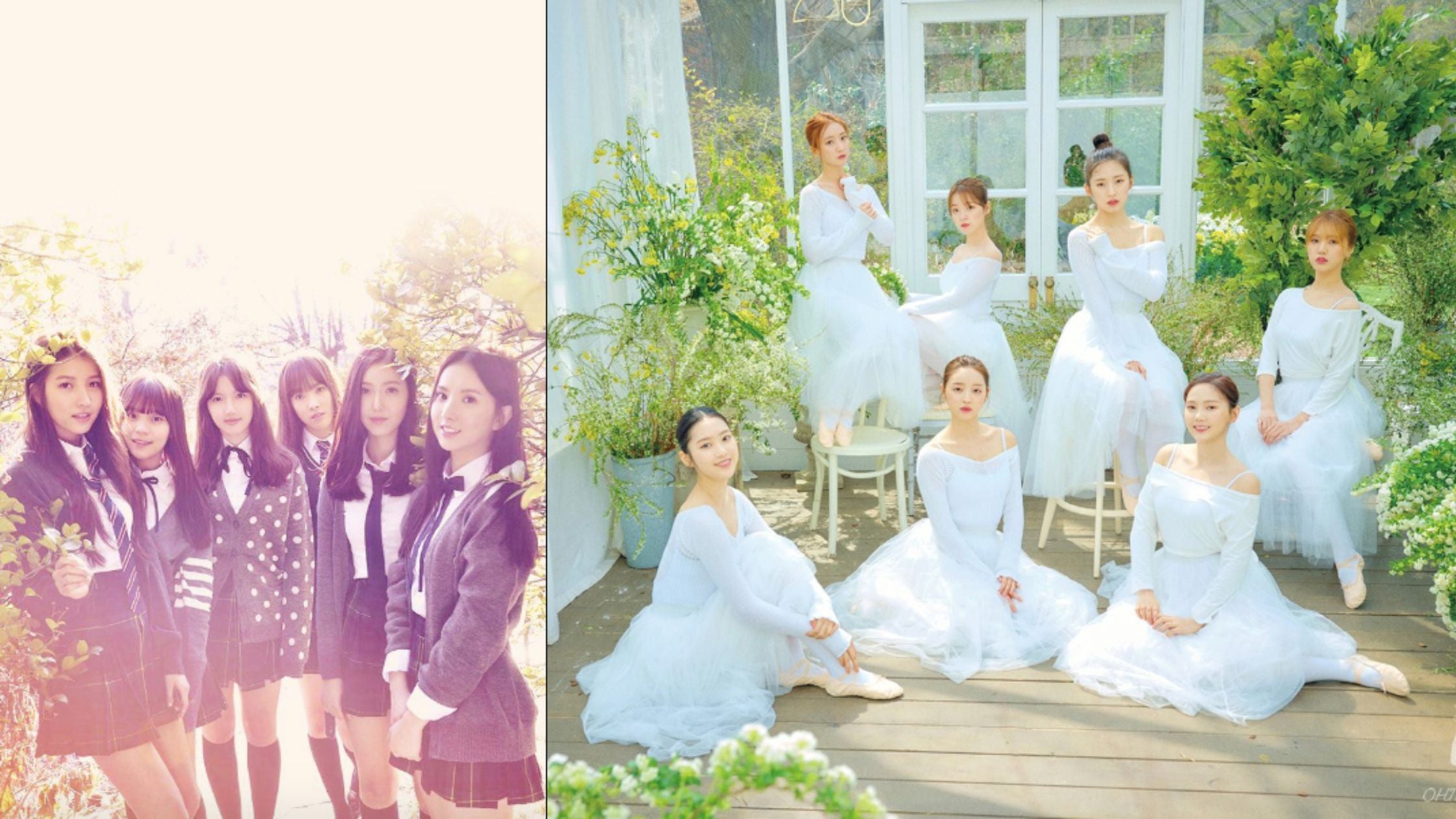
L-R: Image via Pinterest / Oh My Girl via Soompi
Soloists and Duos
Taemin is arguably one of the most influential soloists in and outside Korea. The maknae (youngest member) of Shinee, he’s an exceptional dancer, using both masculine and feminine movements; an amazing vocalist with both range and depth; and above all a talented performer and artist. He’s called the “Idol’s Idol” for good reason: Taemin is unstoppable.
Next we have Sunmi, a member of Wonder Girls and a prolific song-writer, producer, and performer. Her unique style, which is called "Sunmi-pop," combines several pop sub-genres and is characterized by cynical lyrics and titles with wordplay. You may want to watch a lyric video after listening to one of her songs.
We don’t often see sibling acts in K-pop, but AKMU stands out for being a brother-sister duo who writes and produces their own music. Their songs contain folk and soul elements as well as emotional and relatable lyrics. If you need something to comfort you after a hard day or help put you to sleep, play one of AKMU’s tracks.
We end with two more powerful female soloists. Girls' Generation leader Taeyeon (left) mesmerizes listeners with songs that showcase her dynamic vocals. Meanwhile, I.O.I. member Chungha (right) captivates viewers with her flawless choreography and music that displays her confident, playful, and sensual sides.
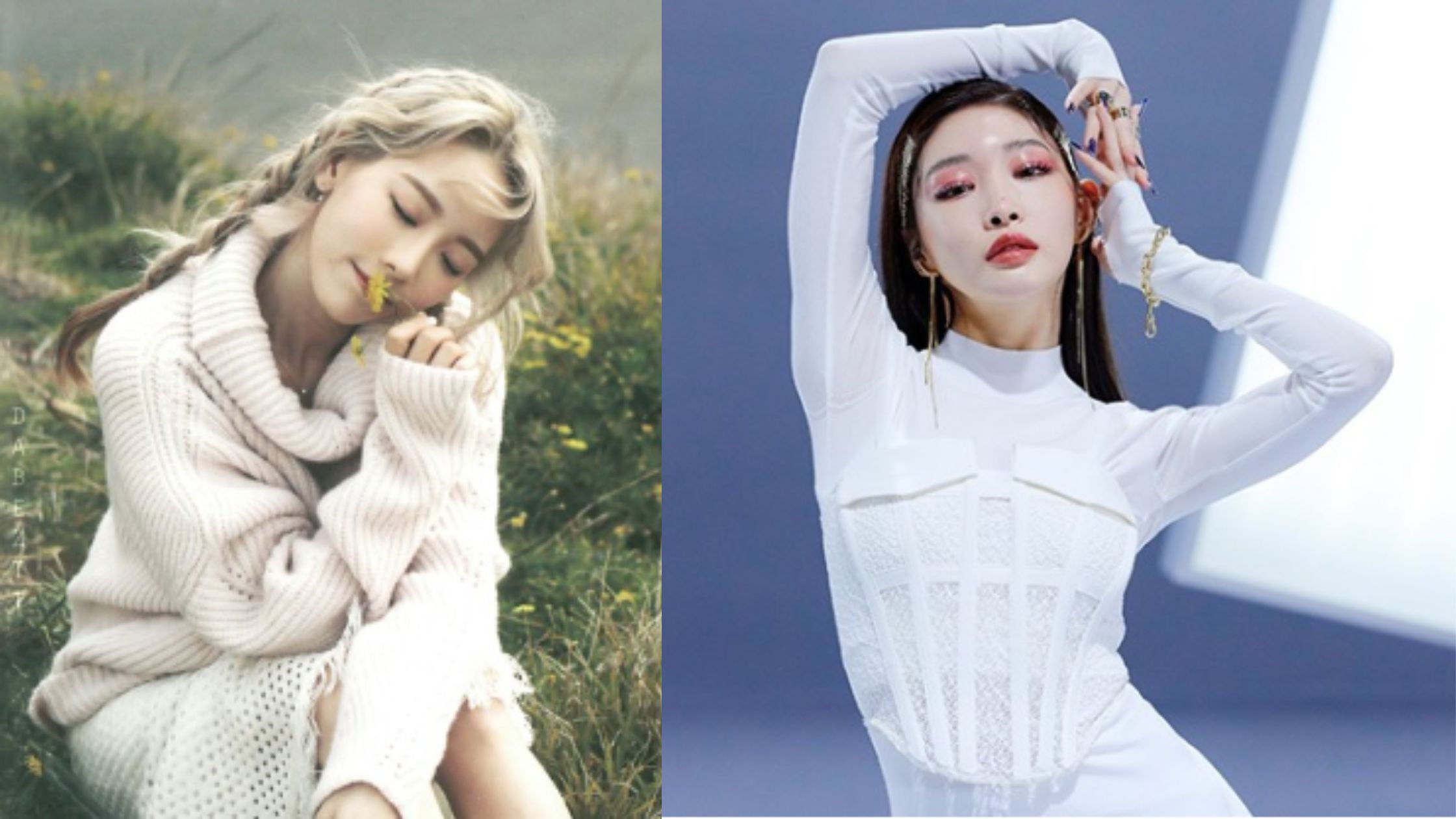
L-R: Image via SoundCloud / Image via Bollywood Hungama
Looking back at this list, you can see more diverse concepts and more artists producing their own tracks. 3rd Gen K-pop continues to be played, and 3rd Gen groups are still well-loved even as their younger label mates and fellow artists gain popularity in the ever-changing world of K-pop.
Representative Acts: BTS, Blackpink, EXO, Red Velvet, NCT, Twice, Seventeen, Mamamoo, Monsta X, Dreamcatcher, VIXX, EXID, iKON, GFriend, GOT7, Oh My Girl, Taemin, Sunmi, AKMU, Taeyeon, Chungha
Fourth Generation (2018-present/2022)
Most 3rd Gen groups continued into the 4th Generation, producing more hits and building up their fanbases. However, in the case of boy bands, some of them lost members due to the mandatory military service. Other groups went on hiatus or succumbed to the “seven year curse” and disbanded, leaving new artists to step into the void.
Boy Bands
K-pop noise music made a comeback thanks in most part to Stray Kids. They're one of the most famous self-producing groups, with many of their songs written and composed by their subunit 3RACHA. Their music features hip-hop and electronica elements, while their lyrics touch on universal themes like loneliness, the struggles of growing up, and the search for one's identity.
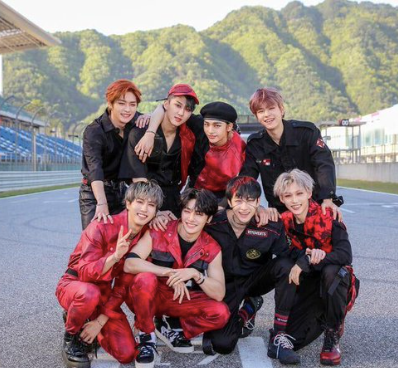
Image Credits: Image via Stray Kids Argentina on Twitter
Since their 2020 single “God’s Menu” and its album, Stray Kids have become bolder, more experimental, and more recognized inside Korea and worldwide. But besides their artistry, they’re also recognized for being down-to-earth, wholesome human beings, particularly their leader Bang Chan. Stray Kids and Stays are more than a group and their fans: they’re a family.
Another self-producing 4th Gen group is Ateez. With an ever-evolving storyline, electrifying live performances, and some jaw-dropping high notes courtesy of maknae Jongho, Ateez have more than earned their title of “4th Generation Leaders.”
HYBE’s Big Hit Entertainment and YG decided it was time to give their older boy bands some younger brothers. 2019’s Tomorrow X Together (TXT) had what was then the highest-charting debut album and the most-viewed K-pop debut music video in the first 24 hours. They’ve tried many different concepts, including fantasy and dark, but they’ve never shed their youthful persona.
The following year, Enhypen entered with upbeat music, impressive choreography, and a memorable vampire concept. They won several Rookie of the Year and New Artist awards and continue to win over both critics and fans. Enhypen aren’t going away any time soon, and we look forward to their future comebacks.
YG’s boy group Treasure offered a more pop-y sound compared to their brother groups, with a stronger emphasis on dancing. Twitter named them the “fastest growing K-pop act” in 2020, and they’ve continued to win fans over with both their Korean and Japanese releases. Anime fans will recognize their voices from their OSTs for Black Clover (both the 2017-2021 series and 2023 movie).
Oneus is to 4th Gen K-pop what VIXX was to 3rd Gen: Concept Kings. From Hamlet to traditional Korea to the Garden of Eden, this self-writing, -producing, and -choreographing group should be getting more attention. Play one of Oneus’ music videos if you need something to blow you away.
Warning: Contains some disturbing imagery
Our last boy group gives current 4th Gen rappers (with the exception of Stray Kids’ Changbin and Han) a run for their money. P1Harmony has some of the strongest and most experimental rapping from contemporary groups, while their sound (a mix of hip hop and EDM) is edgier than many of their peers'. Check out their Disharmony EPs if you feel like taking on the world.
Girl Groups
As their 2nd gen girl groups disbanded or went on hiatus, and while their 3rd gen groups built up their careers, JYP and SM decided to debut younger sister groups. First came JYP’s Itzy, who along with TXT achieved a “Rookie Grand Slam” (being named the new best artists at every music show). Since their debut “Dalla Dalla,” each comeback showcases a more confident and sassy side to the group, as evidenced by their 2020 hit “Wannabe.”
Meanwhile, SM came out with Aespa, whose concept involves virtual counterparts of the girls called “ae.” The songs feature experimental instrumentation and viral dance moves, as well as an intriguing storyline. Thanks to Aespa, the metaverse and AI in general became more popular in K-pop. These girls really are on the next level.
Mnet’s Produce 48 gave K-pop the exceptionally talented IZ*ONE. Producing albums in Korean and Japanese, with fantasy concepts and an ethereal discography, this temporary group won the hearts of fans worldwide and built up a fanbase for when it eventually disbanded. Several of the members became solo artists, while two members debuted again with IVE and two with Le Sserafim.
If we’re going to discuss self-producing groups, then we need to at least mention (G)-Idle. Not only does their discography feature hip-hop, trap, and EDM sounds, but their lyrics and concepts address industry and societal issues. Whether the group is triumphantly declaring themselves queens in “Lion” or rebuking a sexist boyfriend in “Tomboy,” (G)-Idle has cemented their status as legends in both 4th Gen K-pop and K-pop as a whole.
Our last girl group, STAYC, shows that you don’t have to come from a major label to make it big. Their first album, which included the single “So Bad,” had the most sales of the female groups that debuted in 2020. They went on to be nominated for and win various Rookie of the Year awards. STAYC’s concepts and styles remain fresh, light, appropriate for their ages, and approachable to fans. They’re a group that you can't help falling in love with.
Soloists and Co-Ed Groups
4th Gen K-pop saw more idol members start solo careers, whether their groups were still active (like EXO’s Baekhyun) or after they left for various reasons. Monsta X’s Wonho is the latter; after leaving the group in 2019, he made his solo debut with the suave “Open Mind.” Each comeback exhibits his smooth voice, amazing dancing, and unbelievable physique. Wonho is now currently in the military, and we’re impatiently awaiting his return.
When it comes to female K-pop soloists, Bibi is both unconventional and underrated. This singer-songwriter and rapper reels listeners and viewers in with a darker sound and lyrics. She’s a boss and a badass, and Bibi deserves to be a household name.
The first openly gay K-pop idol, Holland has both experienced and spoken out against LGBTQ+ discrimination. His first single "Neverland," self-funded since no company would work with him, went viral despite its 19+ rating. Holland has since gone on world tour and has a close relationship with his fans.
1st Gen K-pop had several co-ed groups. However, thanks to scandals surrounding the members, it would be almost 20 years before another mixed-gender group debuted. Kard isn’t as popular in Korea as they are internationally, but they still have a big following. Their sound – which mixes house, EDM, and moombahton styles – are just one reason why they’re popular today.
Once again, 4th Gen K-pop has shown how the styles and tastes of netizens and K-pop itself change over time. With international fans increasing in number and artists pushing the envelope in terms of sound and concept, there’s no telling where the end of this generation will bring us. That is, if it hasn’t already ended.
Representative Acts: Stray Kids, ITZY, TXT, Loona, Ateez, Aespa, Enhypen, (G)I-dle, P1Harmony, IZ*ONE, Oneus, STAYC, Treasure, Bibi, Holland, Wonho, Kard
Fifth Generation (2022/2023-present)
While most fans will agree that we’re still in the fourth generation of K-pop, other fans – and some K-pop companies – claim that we’ve now entered the fifth generation. This is evidenced by the push to debut new boy groups in 2023, as well as the explosion in popularity of girl groups that debuted last year.

Image Credits: IVE via Instagram
IVE released their debut single “Eleven” in November 2021 and saw commercial and critical success. However, they skyrocketed with 2022’s “Love Dive” (below), which reached the top of many music charts and won various awards. More than that, all the members (especially Wonyoung) have had fans copying their makeup, hair, and clothing styles, making them the "it girls" of the 2020's.
Close behind, or more accurately ahead, we have NewJeans. Despite some controversy owing to the members’ ages and some questionable lyrics, the group exploded with their 90’s-inspired sound and wardrobe. Each member has secured ambassadorships with K-beauty and fashion brands, which is an impressive achievement for a group barely a year into their career.
NewJeans’ label ADOR is one label under HYBE Corporation. Source Music, home to Le Sserafim, is another. Their debut "Fearless" and subsequent releases established the members as confident young women taking on the world. Member and songwriter Yunjin has written her own songs calling out haters who criticize everything they – and other female idols – do, say, or even wear. It’s safe to say that Le Sserafim are role models for new K-pop stans.
Another girl group that debuted in 2022 was JYP’s NMIXX. Their first singles featured an experimental sound that controversially changed tempo and instrumentation without warning. Although their most recent comeback contained a more predictable structure, NMIXX still has a progressive look and sound that’s still being discussed and debated today.
And we can’t forget about Kep1er, formed through Girls Planet 999 (2021) and featuring CLC member Yujin and TXT maknae Huening Kai’s sister Huening Bahiyyih. Their debut was one of the most anticipated for 2022, earning them several music show wins, and they later placed fifth in the second season of Mnet’s Queendom.
Finally, Fifty Fifty's 2022 debut brought a fresh sound with beautiful vocal harmonies and a soft R&B sound. However, it was their February 2023 song “Cupid” (released in both Korean and English) that catapulted them to fame. Besides inspiring TikTok challenges, it earned them a spot on Billboard’s Hot 100 a month later, making them the fastest K-pop group to achieve this milestone.
Two girl groups that debuted this year have already gained attention. Mave: is the first completely virtual K-pop group, a collaboration between Kakao Entertainment and Netmarble. While fans are slow to warm up to this concept, Mave: shows just how far AI has gone and how eager agencies are to adopt and use it.
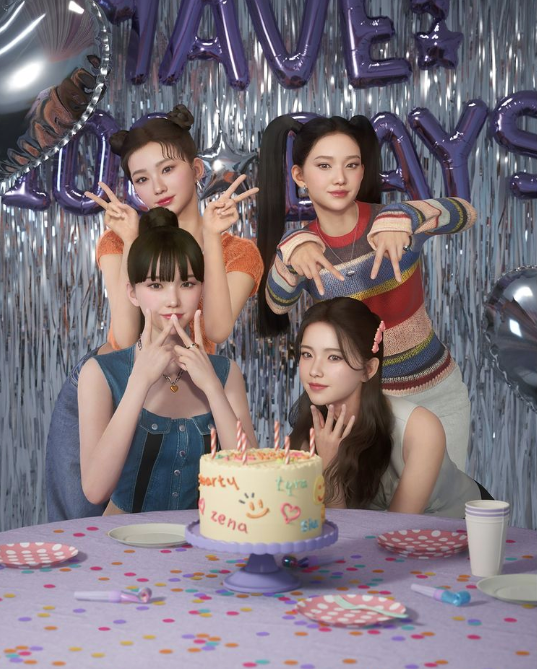
Image Credits: MAVE: via Instagram
Meanwhile, TripleS is breaking ground as K-pop's first decentralized group. With rotating members and activities decided by the fans, the first sub-unit (Acid Angel from Asia) debuted in October 2022 but has since stopped producing new albums due to low sales. Both TripleS as a whole groups and its sub-unit +(KR)ystal Eyes have since debuted, and we’re excited to see what the rest of 2023 has in store for them.
The next highly anticipated girl group release is YG Entertainment’s BabyMonster, the first new girl group since Blackpink. It’s already being described as an “all-rounder” group with very skilled members. There is no confirmed debut date, but a pre-debut single was released on May 14, teasing the members’ talents and building lots of hype.
Compared to girl groups, boy groups didn’t see as much success in 2022. There were several debuts including ATBO, Tempest, Trendz, and TNX (below), but they saw little to no reaction from netizens.
2023 is predicted to be the year of boy groups, with KQ Entertainment’s xikers setting the stage. Ateez’s new label mates are both artistic (with impressive rap and dancing skills) and chaotic, as seen from their music videos and content so far. The future looks bright for xikers, so what about the other groups?
HYBE’s label KOZ Entertainment will produce the next new boy group BOYNEXTDOOR on May 30. The group will have a casual and approachable appearance, making it easier for fans to relate to and follow them.
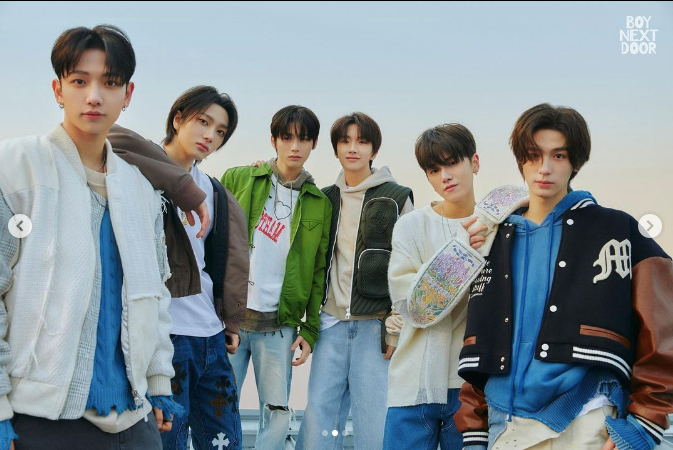
Image Credits: BOYNEXTDOOR via Instagram
Coming in July will be Boys Planet group ZEROBASEONE (ZB1, below), a temporary boy band that will be active for 2.6 years. Around the same time, Fantagio will debut LUN8, while SM will debut its final NCT sub-unit NCT Tokyo. More debuts have either been announced or rumored for the remainder of 2023.
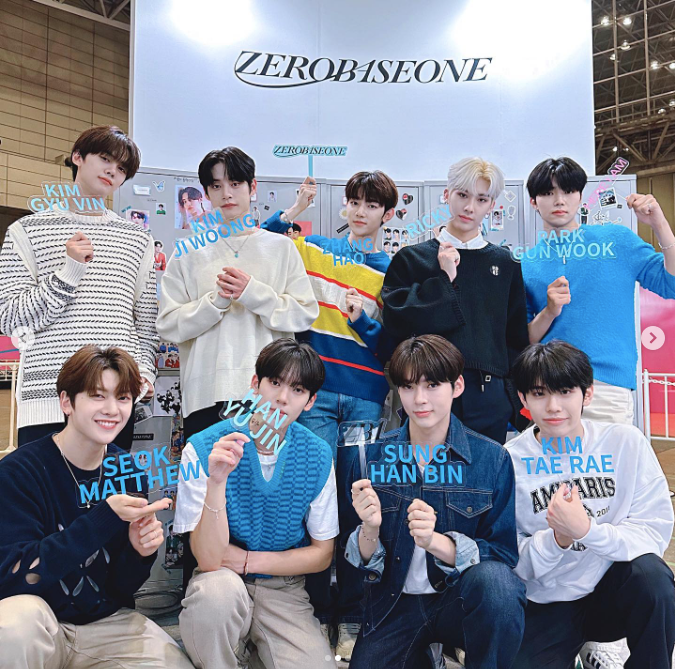
Image Credits ZEROBASEONE via Instagram
Whether the news excites or alarms you, there’s no denying that the K-pop industry is changing faster that we’d expect or like it to. Whatever the 5th Generation brings us, it’s best to go into it with an open mind and encouragement for the new artists.
Representative Acts: IVE, NewJeans, Le Sserafim, NMIXX, Kep1er, Fifty Fifty, TripleS, ATBO, Tempest, Trendz, Xikers
Yet To Debut: BabyMonster, ZB1, BOYNEXTDOOR, LUN8, NCT Tokyo
*
This is just a small look at the overall K-pop scene. We encourage our Seoulmates to listen to the songs we mentioned as well as the other hits by these artists. Comment below your favorite artists and their songs, and which K-pop generation you listen to or identify with the most.

Image Credits: Seoulbox via Instagram
And why not sweeten the deal with some tasty Korean snacks? Order this month’s Seoulbox Signature or V (Vegetarian) for the ultimate listening and snacking experience. Two Korean experiences for the price of one. Enjoy!




